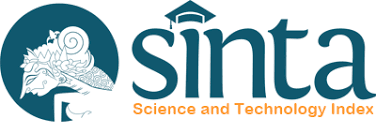Utilization of seaweed (Eucheuma cottonii) to be high fiber and iodine bread
DOI:
https://doi.org/10.22236/argipa.v3i1.2921Abstract
Vegetable and fruit consumption of Indonesian was still very low. This low consumption causes a lack of sufficient fiber to be recommended especially in the adult group. Seaweed is a local food that contains high fiber and iodine that is suitable to be used as processed food as an alternative to daily fiber intake. This study aimed to identify the utilization of seaweed into refined flour-based food with high-fiber and iodine. The levels used were 10% (931), 20% (875), and 30% (108), followed by an organoleptic test in semi-trained panelists to get the best bread formula. The yield of seaweed flour was 4,5% with the fineness level of 80 mesh. This study was an experimental utterly randomized design (CRD). Data was analyzed using ANOVA followed by Duncan's Multiple Range Test. The best bread was then analyzed for proximate, total dietary fiber, and iodine. Dietary food fiber was analyzed using HPLC method. The results showed the most preferred seaweed bread was bread with 10% seaweed flour and 90% wheat flour. Final score for hedonic test was 32,33 and the results of the measurement of the overrun is 88,69%. The ANOVA test showed that there was a significant difference (p<0,05) on the texture, aroma, flavor, and color of seaweed flour bread with control bread. The total dietary fiber content was 12,56 grams/100 grams (12,56%) which had fulfilled the claim of high fiber (>6g/100g). The iodine content was obtained at 549,93 ppb or 54,99 mcg/100 grams and had fulfilled the claim of high iodine(>45mcg/100g).Downloads
Download data is not yet available.
Downloads
Published
2018-01-13
How to Cite
Anggraini, P. (2018). Utilization of seaweed (Eucheuma cottonii) to be high fiber and iodine bread. ARGIPA (Arsip Gizi Dan Pangan), 3(1), 26–36. https://doi.org/10.22236/argipa.v3i1.2921
Issue
Section
Articles

















